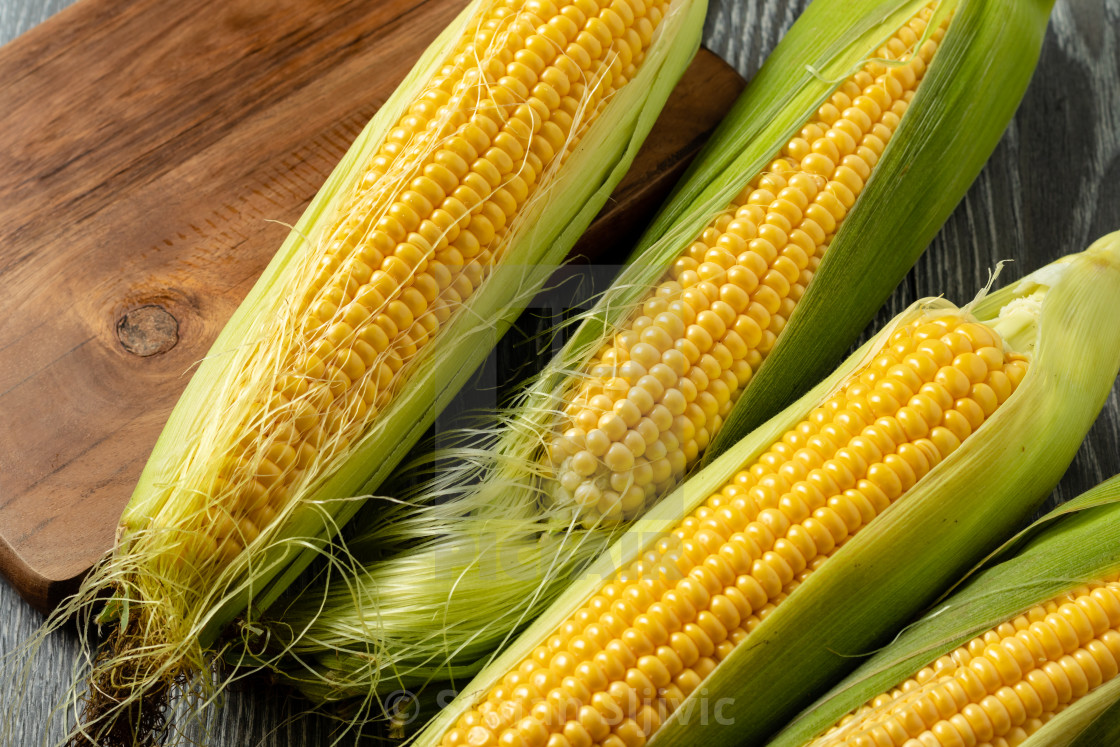Corn-One of the Sure Signs of Summer
TEXARKANA, Ark. –
To me, one of the sure signs of summer is fresh corn on the cob showing up at supermarkets, roadside stands, and farmers markets. Now is peak growing season for sweet corn so what better time to enjoy this versatile vegetable.
It may go by its European name of maize or you may just call it corn; regardless of what name you give it, it is a great gift the Native Americans gave the world.
The first maize encountered in The New World probably originated in South or Central America. Wild corn was unearthed from Southern Mexico and dated to a period of about 5000 B.C.
Sweet corn was introduced in the 1800s and its popularity as a food item has developed rapidly, as have new varieties.
To get the best corn on the market, purchase corn with a bright green, snugly fitting husk and silk ends that are dark and moist. Kernels should be large enough so that they are compact and have no space between the rows.
Test for ripeness by pressing your thumbnail into a kernel about one-third of the way down the cob. A milky liquid should squirt out. If there is no milk, then the corn is probably old. If the liquid is clear, the corn is probably immature and flavor will not be as good.
Sweet corn should be eaten immediately after it is picked for best flavor. Once picked, the corn’s sugar immediately begins its gradual conversion to starch, which in turn lessens the corn’s natural sweetness.
If it must be stored, wrap unhusked ears in damp paper towels and refrigerate to slow down the loss of sugar, in a plastic bag for 2 to 4 days. Never store at room temperature.
Corn is a source of Vitamin A, potassium, magnesium, and fiber. A medium ear of corn contains about 83 calories. And, although it is high in sugar, it is still appropriate for people with diabetes as long as it is counted among the carbohydrate servings for the day.
To prepare corn to eat, first remove the husk and snap back the ends. Remove silk tassels with a vegetable brush or rub the ear in a circular direction under cold running water. If using just the kernels, stand ear on end and cut straight down with a sharp knife, cutting 3 or 4 rows at a time. If preparing for corn-on-the-cob, do not overcook or the corn will lose its flavor.
Corn is so easy to prepare and there are several ways to bring out its best flavor. Here are my favorites:
To boil: Bring a pot of unsalted water to the boil (adding salt toughens the kernels), add the ears and when the water returns to a boil, cover the pot and remove from heat. The corn can then be eaten in 5 minutes or held in the water for 20 minutes.
To grill: Pull back the husks, remove the silks but do not detach the husks. Add a bit of butter or seasoning to the corn and then pull the husks back over the corn. Let the corn soak in a large pot of water for 10-20 minutes. Then grill about 4 inches from the heat source. Sook 15-20 minutes turning occasionally.
It’s easy to enjoy sweet, succulent corn without a lot of embellishment. Use butter or margarine sparingly and try sprinkling no-fat seasonings such as chili powder, chives or curry powder.
If you would like more information on enjoying fresh corn or preserving it by canning freezing, or pickling, contact the Miller County Extension Office, 870-779-3609. We're online at cdue@uada.edu, on social media at MillerCountyFCS, or on the web at uaex.uada.edu/Miller.
Here are two recipes that make delectable side dishes your family will surely love.
Spicy Corn Casserole
2 cups fresh corn*
1 can cream style corn
1 can shoe peg corn
1 can diced tomatoes and chiles
1/2 to 1 cup Mexican blend cheese
Combine all corn in 8x8-inch baking dish that has been sprayed with cooking spray. Mix in diced tomatoes and chiles and bake at 350 degrees for 20 minutes. Remove from the oven and top with Mexican blend cheese. Bake an additional 5-10 minutes, until cheese melts.
*substitute canned corn, drained, or frozen corn, thawed.
By Carla Due
County Extension Agent - FCS
The Cooperative Extension Service
U of A System Division of Agriculture
Media Contact: Carla Due
County Extension Agent - FCS
U of A Division of Agriculture
Cooperative Extension Service
400 Laurel Street, Suite 215 Texarkana AR 71854
(870) 779-3609
cdue@uada.edu
Related Links
The Arkansas Cooperative Extension Service is an equal opportunity institution. If
you require a reasonable accommodation to participate or need materials in another
format, please contact your County Extension office (or other appropriate office)
as soon as possible. Dial 711 for Arkansas Relay.
Pursuant to 7 CFR § 15.3, the University of Arkansas System Division of Agriculture
offers all its Extension and Research programs and services (including employment)
without regard to race, color, sex, national origin, religion, age, disability, marital
or veteran status, genetic information, sexual preference, pregnancy or any other
legally protected status, and is an equal opportunity institution.
